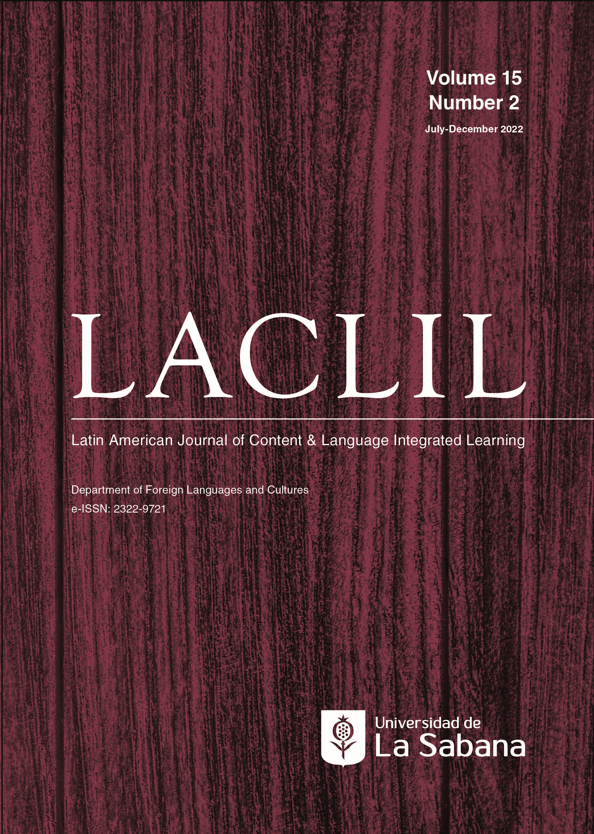Women’s Suffrage Through the CLIL Approach
DOI:
https://doi.org/10.5294/laclil.2022.15.2.3Keywords:
CLIL, CSE, critical thinking, women's suffrage, voteAbstract
The aim of this article is to improve and develop students’ critical thinking as well as their linguistics skills by making use of the CLIL approach. Focusing on relevant topics in today's society such as the voting system is an interesting opportunity not only to motivate students' learning, but also to be aware of the world they live in. The activities are designed for students around the voting age in Argentina with an intermediate level of English. Through the development of writing and speaking skills and collaborative work, students will be aware of the importance of past events such as the women’s suffrage, and social differences that are still happening all over the world.
Key words: CLIL,CSE, critical thinking, women’s suffrage, vote.
Downloads
References
Accardo, S. (2020). Tips for including representation and diversity in primary ELT [Video]. YouTube. https://www.youtube.com/watch?v=rpnCAvfnlK8&ab_channel=IATEFLYLTSIG
Banegas, D. L. (2013). The integration of content and language as a driving force in the EFL lesson. In E. Ushioda (Ed.), International perspectives on motivation: Language learning and professional challenges (pp. 82–97). Palgrave.
Banegas, D. L., & Lauze, C. (2020). CLIL and comprehensive sexual education: A case of innovation from Argentina. Profile: Issues in teachers’ professional development, 22(2), 199–209. https://doi.org/10.15446/profile.v22n2.80528
Barnet, S., & Bedau, H. (2011). Critical thinking, reading, and writing: A brief guide to argument (7th Ed.). Macmillan Learning.
Gogna, M., Jones, D., & Ibarlucía, I. (2013). The challenges of sexology in Argentina. International Journal of Sexual Health, 25(1), 13–26. https://doi.org/10.1080/19317611.2012.737447
Jenkins, R. (2014). Social identity. Routledge.
Morgade, G., & Alonso, G. (2008). Cuerpos y sexualidades en la escuela: de la normalidad a la disidencia [Bodies and sexualities at school: From normality to dissent]. Paidós.
Oshiro, B. (2019). Encourage critical thinking with 3 questions. TEDX [Video]. YouTube. https://www.youtube.com/watch?v=0hoE8mtUS1E
Pérez-Berbain, M., Banegas, D. L., & Beacon, G. (2021). Introduction: Diversity in ELT. In D. L. Banegas, G. Beacon, & M. Pérez-Berbain (Eds.), International perspectives on diversity in ELT (pp. 1–17). Palgrave.
Pinner, R. S. (2013). Authenticity of purpose: CLIL as a way to bring meaning and motivation into EFL contexts. Asian EFL Journal, 15(4), 138–159.
UNESCO. (2017). A guide for ensuring inclusion and equity in education. UNESCO. http://unesdoc.unesco.org/images/0024/002482/248254e.pdf
Downloads
Published
How to Cite
Issue
Section
License
Copyright (c) 2023 Latin American Journal of Content & Language Integrated Learning

This work is licensed under a Creative Commons Attribution-NonCommercial-NoDerivatives 4.0 International License.
This Journal and its articles are published under the Creative Commons CC BY 4.0 DEED Attribution 4.0 International license. You are free to: Share — copy and redistribute the material in any medium or format for any purpose, even commercially. Adapt — remix, transform, and build upon the material for any purpose, even commercially. The license cannot revoke these freedoms as long as you follow the terms of the license.








